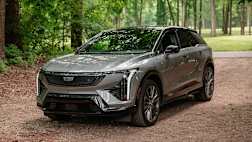When cars were in their infancy, so was the concept of music outside a concert hall. Record players were about as high-tech as it got, and car audio was limited to the sound of the engine and frightened yelps of the pedestrians who'd never seen one before.
It wasn't until the 1930s that a few enterprising types grabbed a Studebaker and installed a portable radio prototype. Based on the Victrola record player, the new unit was known as the Motorised Victrola, or Motorola.
It’s no exaggeration to say that from that point forth, the entire driving experience was forever changed. Whether it be thumping doof-doof, tinkling classical or trash-talkback, the car radio - and its descendants of a personal stereo variety - have meant that you never really need to feel alone in the car.
They’ve also probably done more to encourage the curious practice of singing to yourself than any other invention. Think about it, other than in the car when you’re alone and that classic hit from your teen years comes on, how often do you really belt out a tune (not so fast, karaoke-lovers, that’s not singing)?
Eighty-odd years later, the car audio market is the biggest it's ever been. Not a single new car rolls off the production line without at least an AM/FM radio fitted, which is seen as one of the most basic staples a car can have.
DAB, or Digital Audio Broadcast, is really a way of using radio signals more efficiently.
And yet, just as TV is moving at lightning speed from the world of devour-what-you’re-given broadcast to full-buffet streaming services, cars are moving from the old-school analogue system to digital transmissions, with a raft of new cars now sporting Digital Radio capabilities, with all the new choice that entails.
The Dawn of Digital
DAB, or Digital Audio Broadcast, is really a way of using radio signals more efficiently. For very complex and arguably uninteresting reasons, traditional AM (or MW for Medium Wave) and FM use large chunks of the radio spectrum in order to work. Because of this, spaces in the AM and FM bands are severely limited.
Digital Radio uses its own discrete frequency and a different method of transmission that takes up less space in its radio band. This means that a much larger number of stations can use a relatively narrow section of the spectrum.
In Australia, digital radio uses the DAB+ architecture, which utilises a more efficient audio codec (ask a sound engineer) than the earlier DAB standard to ensure a higher sound quality.
New cars will have DAB+ if they have digital-radio capabilities at all.
Digital radios automatically tune to all available digital stations, making it easy to flick through.
Digital radio will eventually replace analogue in Australia, just as digital TV signals have replaced the old roof antenna. The inexorable digital march has already begun in smaller, technologically forward countries such as Norway, Denmark, Sweden and the United Kingdom.
The big radio stations in Australia are already prepared for the switch, too, which is why you can find most of them already available on the digital platform.
What’s so good about digital radio?
Putting aside the excitement of audiophiles for a moment, digital radios automatically tune to all available digital stations, making it easy to flick through, rather than using the tired old ‘seek’ button.
DAB+ can also transmit the track and artist information to your car’s multimedia screens, as well as news or traffic updates, without interrupting the audio stream.
And because DAB+ uses its radio spectrum more efficiently, there are more – and more diverse – stations available than the regulars back in the AM/FM bands. Yes, it will take you a while to work out what stations like “Zoo” and “Buddha” represent, but that’s all part of the journey of discovery.
Finally, DAB+ is able to transmit higher-quality audio than AM and FM broadcasts. Technically, a partially submerged mobile phone can transmit higher quality broadcasts than AM, but that’s beside the point.
All right, what are the drawbacks?
To be honest, digital radio is pretty chock-full of drawbacks.
Digital radio can transmit at MP3 quality so, at least in theory, it should sound better than traditional radio. However, because of the way DAB+ works, the more stations there are in a certain frequency, the lower the data rate (read: quality) of the broadcasts. In some cases, the audio quality can be even worse than FM.
The biggest problem is that digital radio is the HD-DVD of in-car audio.
Driving into an underground carpark or through a tunnel can wreak havoc on your reception, which is a problem we haven’t had to put up with since the very earliest days of AM-only radio.
Worse still, driving anywhere outside major cities renders DAB+ useless, due to an absence of towers and signal repeaters for digital audio broadcasts.
Switching to satellite radio would solve the problem of poor reception outside metropolitan areas, but it’s beyond unlikely that it’ll grace our wide, brown land any time soon.
The large populations of the American and European continents support the hefty overheads that satellite radio entails (and charge subscriptions, just like Netflix, for the privilege). Australia’s relatively sparse smattering of citizens means that it’s not a profitable enterprise here.
But the biggest problem is that digital radio is the HD-DVD of in-car audio, destined to be trumped by the Blu-Ray alternatives before long.
So, what are these alternatives?
There are quite a few. The most obvious are the plethora of internet-based streaming services, such as Pandora, Spotify, Google Play Music and Apple Music.
As long as you have a mobile data connection, you can listen to whatever sort of music you choose, with playlists generated from songs you like, via your mobile phone. Some services are supported by ads, but ad-free experiences require a subscription fee.
If you’re not in a mobile service area, Pandora and its ilk become about as useful as a glass hammer.
And, with Apple CarPlay and Android Auto systems fitted to more and more new cars, you might even be able to hear a death knell ringing out the next time you tune in to DAB.
The drawbacks of internet-streaming services are much the same as anything that relies on radio signals of any kind: reception. If you’re not in a mobile service area, Pandora and its ilk become about as useful as a glass hammer, so it can be worth having alternatives if you’re headed off the beaten track, or if you use a telco with spotty service.
Should this be the case, you can always connect your phone or audio player via Bluetooth or USB. Some cars have SD card slots and others have onboard hard drive space for you to store your favourite tracks.
Otherwise, there’s always humble old FM.
Basically, though, just as any new TV set you’ve bought in the last five years was branded “digital ready”, most new cars you purchase will be the same when it comes to DAB+.
Be sure to explore its wondrous options, and then go back to streaming music from your phone, just like you usually do.















